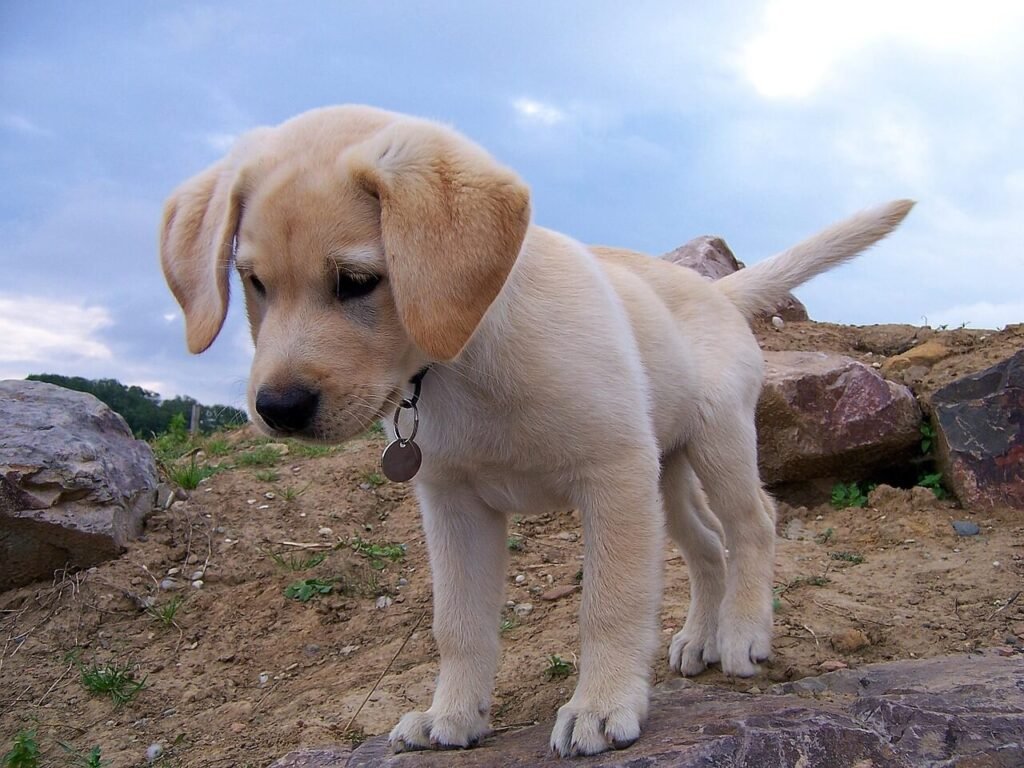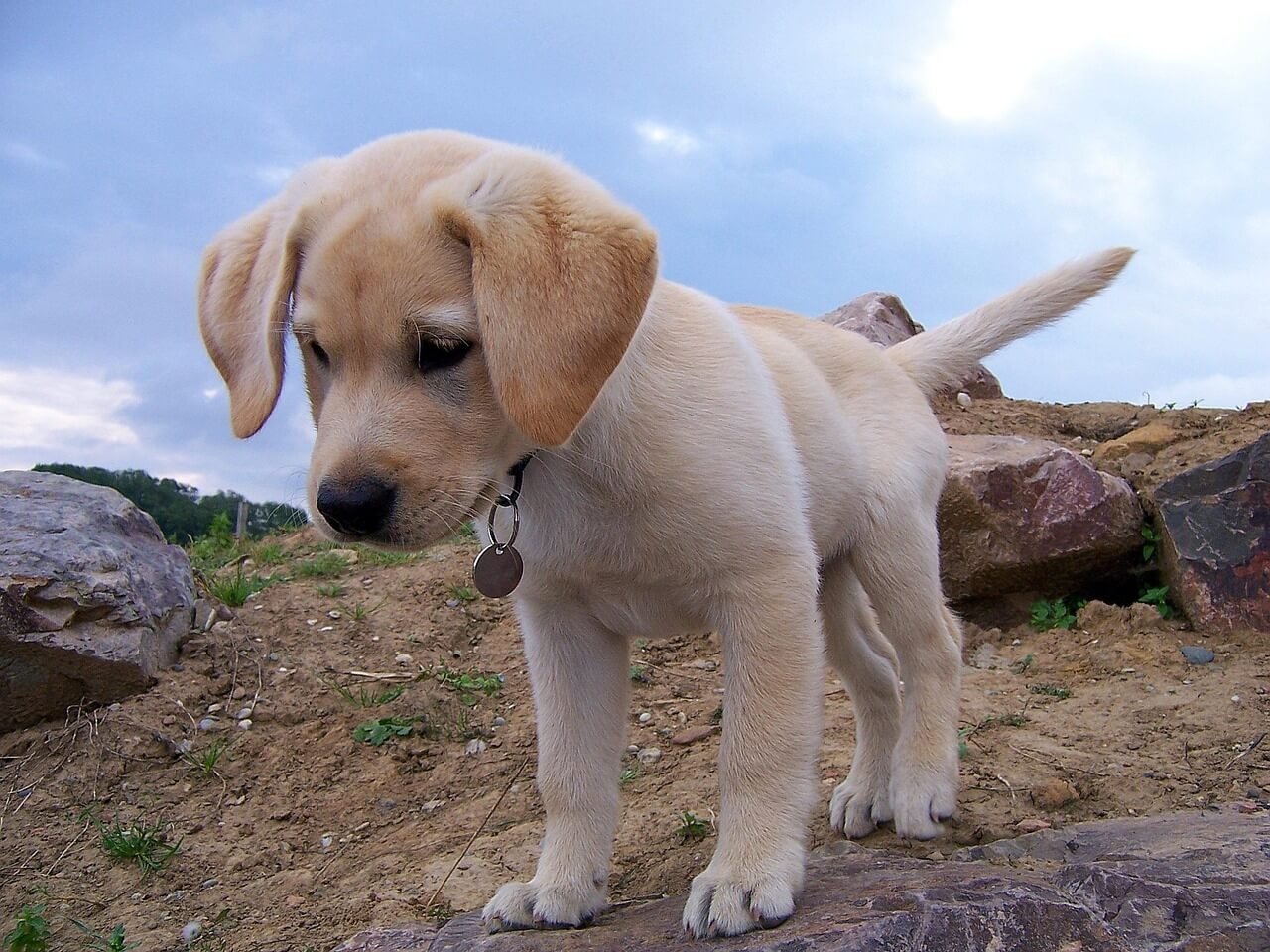Why Is My Dog Losing Hair on Its Tail? Understanding the Causes
It’s always concerning when you notice changes in your dog’s appearance, especially when it involves something as noticeable as hair loss on their tail. Whether it’s a small patch or a more widespread issue, seeing your furry friend lose hair can be alarming. But don’t panic just yet—hair loss on a dog’s tail can stem from a variety of causes, ranging from minor irritations to more serious underlying health conditions.
In this blog post, we’ll explore the possible reasons behind this issue, discuss preventive measures, and provide actionable tips to help your pup regain their healthy coat. By understanding what might be causing your dog’s hair loss, you can take the necessary steps to ensure they’re happy, healthy, and comfortable.
Common Causes of Hair Loss on a Dog’s Tail
Hair loss on a dog’s tail can occur for several reasons. Here are some of the most common causes:
Allergies
Dogs can develop allergies to food, environmental factors like pollen, or even flea bites. These allergies often lead to itching, which can result in hair loss on the tail.Parasites
Fleas, ticks, and mites are notorious for causing skin irritation. If your dog is constantly scratching or biting their tail, it could be due to these pesky parasites.Hormonal Imbalances
Conditions like hypothyroidism or Cushing’s disease can disrupt your dog’s natural hormone levels, leading to hair thinning or loss.Infections
Bacterial or fungal infections, such as ringworm, can cause localized hair loss and inflammation on the tail.Trauma or Injury
If your dog has recently injured their tail, the area may lose hair as it heals. This is often temporary but should still be monitored.
Understanding these potential causes can help you identify the root of the problem. Once you know what’s triggering the hair loss, you can work with your veterinarian to find the best solution for your dog.
Signs That Your Dog Needs Veterinary Attention
If your dog is losing hair on their tail, certain symptoms may indicate that it’s time to consult a veterinarian. Keep an eye out for these warning signs:
Excessive Scratching
If your dog is obsessively licking, chewing, or scratching their tail, it could be a sign of an underlying issue that needs professional attention.Redness or Swelling
Inflammation around the tail area often points to an infection or allergic reaction that requires treatment.Odor
A foul smell emanating from the tail region could indicate a bacterial or yeast infection.Behavioral Changes
If your dog seems unusually lethargic or irritable, it may be due to discomfort caused by the hair loss.Bald Patches
Large areas of missing hair, especially if they’re spreading, should not be ignored and warrant a vet visit.
These signs can help you determine whether your dog’s hair loss is a minor issue or something more serious. Early intervention is key to preventing further complications.
Check this guide 👉Why My Dog Ignores Dog Food but Eats Human Food: Best 7 Tips!
Check this guide 👉Why Is My Dog Not Eating but Still Drinking Water? Best 7 Tips!
Check this guide 👉Why Is My Dog Scooting Their Butt on the Floor? Best 7 Tips!

Preventive Measures | Treatment Options |
|---|---|
Regular grooming and brushing | Medicated shampoos for skin issues |
Flea and tick prevention | Antibiotics for infections |
Balanced diet rich in nutrients | Hormone therapy for imbalances |
Allergy testing and management | Topical creams for inflammation |
Stress reduction techniques | Anti-inflammatory medications |
Tips for Preventing Hair Loss on Your Dog’s Tail
Prevention is always better than cure. Here are some practical tips to help keep your dog’s tail healthy and full of hair:
Maintain a Healthy Diet
Ensure your dog is getting all the essential vitamins and minerals they need for optimal skin and coat health.Regular Grooming
Brushing your dog’s fur regularly helps distribute natural oils and prevents matting, which can contribute to hair loss.Flea and Tick Control
Use vet-recommended products to protect your dog from parasites that can irritate their skin.Monitor for Allergies
Keep track of any changes in your dog’s environment or diet that might trigger allergic reactions.Provide Mental Stimulation
Boredom or anxiety can lead to excessive licking or chewing, so make sure your dog has plenty of toys and activities.
By incorporating these habits into your routine, you can significantly reduce the risk of hair loss on your dog’s tail.
How to Support Your Dog During Recovery
If your dog is already experiencing hair loss, here’s how you can support them while they heal:
Keep the Area Clean
Gently clean the affected area to prevent further irritation or infection.Use Protective Gear
Consider using an Elizabethan collar (cone) to stop your dog from licking or biting the tail.Follow Vet Recommendations
Administer any prescribed medications or treatments exactly as directed by your veterinarian.Reduce Stress
Create a calm and comfortable environment for your dog to speed up the healing process.Monitor Progress
Keep an eye on the affected area to ensure it’s healing properly and report any concerns to your vet.
Supporting your dog during this time will not only help them recover faster but also strengthen the bond between you and your furry companion.
Understanding Environmental Factors Contributing to Hair Loss
Environmental factors can play a significant role in your dog’s hair loss, especially on sensitive areas like the tail. Here are some common environmental triggers to consider:
Seasonal Changes
Extreme weather conditions, such as cold winters or hot summers, can dry out your dog’s skin and lead to hair loss.Exposure to Chemicals
Household cleaning products or lawn chemicals may irritate your dog’s skin if they come into contact with their tail.Lack of Sunlight
Insufficient exposure to natural sunlight can affect your dog’s vitamin D levels, which are crucial for healthy skin and fur.Humidity Levels
High humidity can create a breeding ground for bacteria or fungi, while low humidity can cause dryness and flakiness.Pollution
Airborne pollutants can settle on your dog’s coat and irritate their skin over time.
By minimizing your dog’s exposure to these environmental stressors, you can help maintain a healthy coat and reduce the risk of hair loss on their tail.
Dietary Adjustments to Promote Tail Health
What your dog eats directly impacts the health of their skin and coat. A balanced diet can make a world of difference when it comes to preventing or addressing hair loss on the tail. Consider the following dietary adjustments:
Omega-3 Fatty Acids
Foods rich in omega-3s, like fish oil, can reduce inflammation and promote a shiny, healthy coat.Protein-Rich Foods
High-quality protein sources, such as chicken or beef, provide the building blocks for strong hair growth.Zinc Supplements
Zinc deficiencies can lead to dry skin and hair loss, so incorporating zinc-rich foods or supplements may help.Hydration
Ensuring your dog drinks enough water keeps their skin hydrated and prevents excessive shedding.Avoid Fillers
Low-quality ingredients like corn or soy can trigger allergies and should be avoided in your dog’s diet.
Making thoughtful dietary changes can not only improve your dog’s overall health but also address issues like hair loss on their tail.
Behavioral Signs That Indicate Tail Hair Loss Issues
Sometimes, your dog’s behavior can provide clues about why they’re losing hair on their tail. Paying attention to these signs can help you identify the root cause early. Here are some behavioral indicators to watch for:
Excessive Licking
If your dog is constantly licking their tail, it could be a sign of discomfort or an underlying issue like an allergy.Tail Chasing
Obsessive tail chasing might indicate parasites, anxiety, or even neurological problems.Avoidance of Touch
If your dog seems sensitive or avoids being touched near their tail, it may point to pain or irritation.Changes in Grooming Habits
Dogs that suddenly stop grooming themselves or focus excessively on one area may be signaling distress.Increased Aggression
Uncharacteristic growling or snapping when approached could mean your dog is in pain due to their tail condition.
Observing these behaviors can provide valuable insights into your dog’s health and help you take timely action to address their hair loss concerns.
FAQ
Can stress cause my dog to lose hair on their tail?
Yes, stress or anxiety can lead to excessive licking or chewing, which may result in hair loss.
How long does it take for a dog’s hair to grow back?
Hair regrowth typically takes 4-6 weeks, depending on the underlying cause and treatment.
Should I shave my dog’s tail if they’re losing hair?
It’s best to consult your vet before shaving, as improper grooming can worsen the condition.
Are certain breeds more prone to tail hair loss?
Breeds with sensitive skin or thick coats, like Golden Retrievers, may be more susceptible.
Can I use human shampoo on my dog’s tail?
No, human shampoo can dry out your dog’s skin and exacerbate hair loss.
Final Thoughts: Supporting Your Dog Through Tail Hair Loss
Hair loss on your dog’s tail doesn’t have to be a source of endless worry. With the right knowledge and proactive care, you can identify the cause, seek appropriate treatment, and prevent future occurrences. Remember, your dog relies on you to keep them healthy and happy. By staying attentive to their needs and working closely with your veterinarian, you can ensure that your furry friend enjoys a full, shiny coat—and a wagging tail—for years to come.
Cuterebra Larvae in Cats: Best 7 Expert Tips! – Expert advice on signs, treatment & prevention of this rare but serious feline parasitic infestation.
Cuterebra Larvae in Dogs: Best 7 Expert Tips! – Expert advice on signs, treatment & prevention of this rare but serious parasitic infestation.
Cat Tumor on Paw: Best 7 Expert Tips! – Expert advice on signs, diagnosis, treatment & care for feline paw tumors.
Panacur Side Effects in Dogs: Best 7 Expert Tips! – Safe usage, common reactions & when to call the vet.





